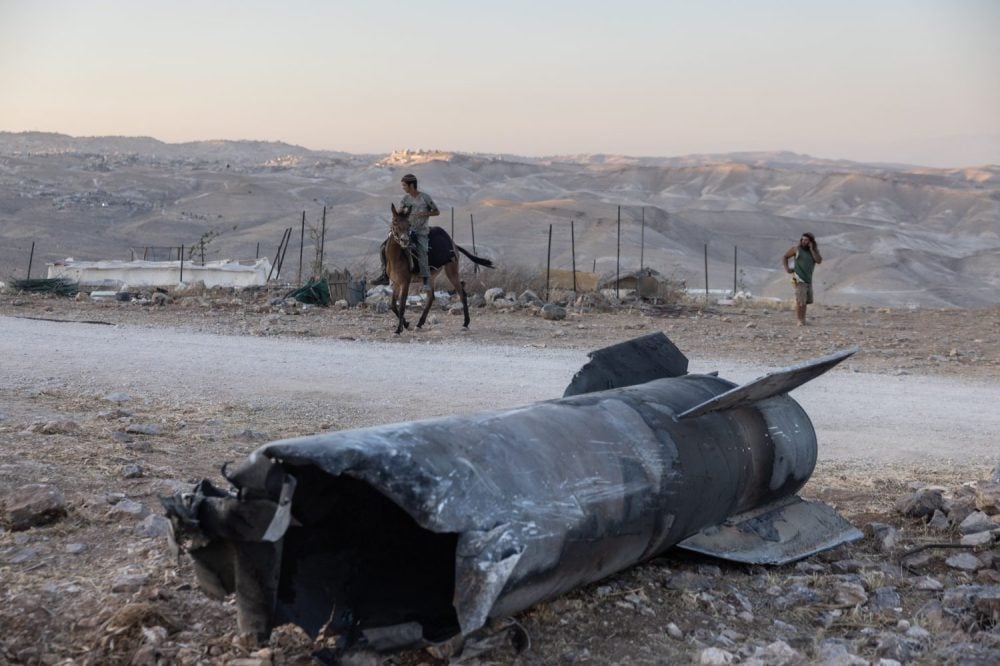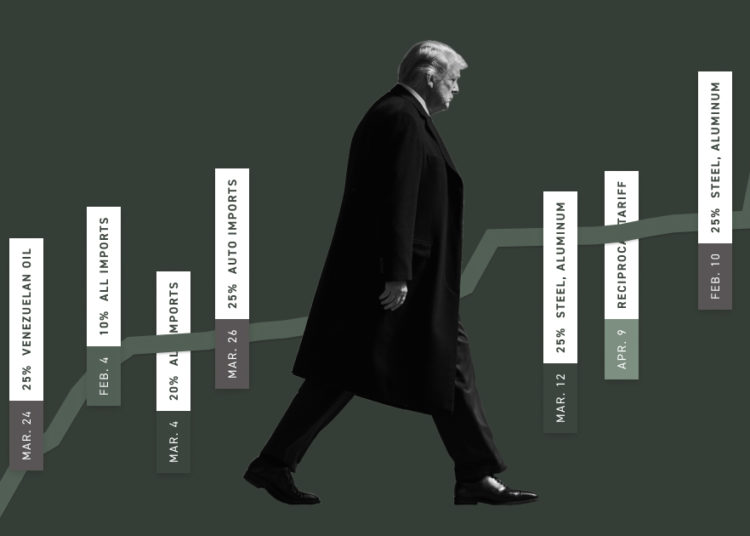Israel’s air war against Iran—“Operation Rising Lion”—may be over, but the controversy surrounding the attacks lives on. One key question is whether the U.S. strikes on the Iranian nuclear facilities at Fordow, Natanz, and Esfahan, dubbed “Operation Midnight Hammer,” succeeded in obliterating the deeply buried Fordow site or merely incapacitated it for a few months. The extent of the damage to Iran’s nuclear program is, of course, important from an operational perspective. But the broader critique—that the 12-day air campaign was somehow foolhardy because it may not have permanently destroyed the Iranian nuclear program—misses the point.
Operation Rising Lion was a limited war fought with limited means for an even more limited period—all of which, in turn, means that the campaign’s objectives were also limited. The campaign, therefore, needs to be judged against the alternative strategies—engaging in a longer, more protracted campaign or doing nothing militarily and sticking with diplomatic options. And by that measure, the operation was a success.
To begin with the option of a longer war: There were certainly more targets left in Iran when U.S. President Donald Trump called an end to the war. Although a full public accounting of the attacks’ effects will take time, the Israeli military claims it eliminated roughly 1,000, or 40 percent to 50 percent, of Iran’s ballistic missiles; destroyed 250 (or roughly two-thirds) of Iran’s missile launchers; killed several dozen senior Iranian military leaders and nuclear scientists; and set the nuclear program back by “years.” In other words, even by the Israeli military’s own estimates, Iran’s nuclear program is not demolished, it retains most of its missiles, and most of its military leaders remain untouched.
Still, the question is whether Israeli military operations had reached a point of diminishing returns. There is some evidence to suggest that’s the case. For starters, the International Atomic Energy Agency (IAEA) confirmed that Israeli and U.S. strikes caused significant damage to Iranian nuclear facilities at Esfahan and Natanz. To the extent that underground facilities like those at Fordow remain partially intact, it is not immediately clear what more Israel can do from the air that U.S. strikes with 30,000-pound GBU-57 “massive ordnance penetrator” bombs could not. After all, Israel lacks such weapons and the strategic bombers to deliver them.
While prolonging the air campaign likely would have enabled Israel to target yet more of Iran’s missile capabilities and senior leadership, the additional operational benefits need to be judged relative to the likely costs. Despite the suppression of the Iranian missile launchers, Iran still succeeded in killing more than two dozen Israeli citizens, wounding more than 3,000, and causing $3 billion in damage. Through a mixture of skill and good fortune, Israel avoided losing any pilots over Iran, but with enough time and sorties, eventually Israel’s luck would have run out, potentially handing Iran a valuable bargaining chip in the process. And while Jewish Israelis were largely supportive of the preventive war, Americans were mixed about playing a direct role. This could have set up a political dynamic where Israel would be left without its superpower backer.
Ultimately, the only way Israel or the United States could have forced a likely end of the Iranian threat would have been pushing for regime change. No doubt such a resolution is not without appeal. For almost half a century, the Iranian regime has been actively killing Americans and Israelis with its proxies, all while chanting “death to America” and “death to Israel.” Just in case anyone missed the point, it even erected a countdown clock to Israel’s destruction in central Tehran. But as the Iraq and Afghanistan wars proved, regime change is invariably messy, can lead to unpredictable outcomes, and requires a long-term commitment to do right. It’s understandable that neither Israel nor the United States felt particularly inclined to make regime change the goal of the war.
At the same time, the second alternative—not striking Iran but letting diplomacy and sanctions run their course—was no more attractive than the first. Despite the Iranian protestations that they are not interested in nuclear weapons, the IAEA has noted that Iran has been enriching uranium well past the point needed for benign uses. If anything, the Iranian program was accelerating prior to the strike. According to IAEA reports, Iran had upped its stockpiles of near-bomb-grade uranium by almost 50 percent from February to May alone. Moreover, if Iran really has only benign intent, it would have no need to surround its nuclear sites with air defense or bury the facilities deep underground. The Fordow enrichment facility, for example, was built some 80 to 90 meters into a mountain.
Admittedly, there is an active debate about how close Iran was to a bomb before the war. Both Israel and the IAEA estimate that Iran could have produced enough enriched uranium for 15 bombs in a matter of weeks. U.S. assessments counter that enriched uranium alone does not suffice for a deliverable device. Building an actual bomb could take up to three years.
But it’s worth noting that estimating nuclear breakouts is tricky, and the United States has been surprised before. During the first Gulf War in 1991, for example, the United States was surprised by the advances in the Iraqi nuclear program—and was surprised again by the lack of progress during the second Gulf War. The United States did not accurately predict the extent and pace of North Korea’s nuclear and missile programs, and it underestimated the speed of China’s nuclear buildup.
At some level, though, it is irrelevant whether Iran is several weeks or several years away from a bomb. There is little evidence to suggest that diplomacy and economic coercion would have forced Iran to end its nuclear program absent military pressure. The “maximum pressure” campaign of the first Trump administration inflicted a lot of economic pain on the Iranian population but failed to change Iran’s nuclear stance. That’s not surprising, because economic sanctions have a decidedly mixed track record of forcing states to abandon core security concerns, such as nuclear weapons. There is little to suggest that similar economic pressure would have been any more successful.
Nor was there a diplomatic solution in the offing. The Trump administration, after all, tried to broker a new deal shortly after coming into office. According to press reports, what was on the table was a deal similar to the Joint Comprehensive Plan of Action—the Iran nuclear deal from the Obama era. That deal had a range of limitations—including sunset provisions, the lack of any restrictions on Iran’s missile program (the likely delivery mechanism for a bomb), and the failure to address Tehran’s proxy network. And even this deal proved a bridge too far for the Iranian regime.
The unpleasant reality is that there was no viable diplomatic or economic option to curtailing Iran’s program prior to the Israeli military action. Given Iran’s past willingness to attack nuclear-armed Israel and U.S. assets in the region, a nuclear-armed, even less deterred Iran was a nonstarter for Israel and the Trump administration. Even discounting the actions of Iran’s proxies, Iran directly struck bases hosting U.S. troops in Iraq with missiles in 2020, following the U.S. killing of a top commander. More recently, it struck Israel with a barrage of missiles and drones in April 2024 and then another salvo in October 2024, expanding the Middle Eastern war that followed Hamas’s Oct. 7, 2023, attack on Israel. One can hope that Iran would be more restrained with its own nuclear trump card, but there is nothing so far that guarantees this would be the case.
If a larger, longer war is too risky and non-action potentially catastrophic, then by default we are left with the solution of a limited war to degrade the Iranian nuclear program and buy time for circumstances to change. In Israel’s case, it has tried this strategy twice before—striking Iraq’s Osirak reactor in 1981 and Syria’s al Kibar reactor in 2007. Both of those strikes proved successful, at least insofar as each bought enough time to allow other geopolitical events to unfold that kept Iraq and Syria from going nuclear. But the Iranian program was far more advanced at the time of the attacks, and so it’s by no means assured that the Israeli and U.S. strikes will produce similar results. At the very least, the war likely bought Israel and the United States time.
But more importantly, limited wars can set the stage for diplomacy. As the Nobel Prize-winning economist Thomas Schelling noted, violence can be a form of diplomacy. Force is a tangible measure of the strength and resolve of one side relative to an adversary. In a matter of weeks, Israel and the United States demonstrated that they have the power and willingness to strip Iran of its nuclear capabilities. And that should give both countries bargaining power for a future Iran nuclear deal, especially because they have signaled that they will strike Iran again “without question” if it restarts its program. Whether such leverage ultimately converts into a new nuclear deal—perhaps an improved version of the Obama-era deal—remains to be seen, but Operation Rising Lion reset the diplomatic playing field. That itself is a major success.
It seems ironic that, after years of complaining about “endless wars” in the Middle East, some of the same voices are now complaining about having fought a 12-day one. But it points to the broader need to relearn the logic of limited wars and what they can and cannot reasonably accomplish. In and of themselves, they rarely offer a permanent resolution, but they can buy time, shift the geopolitical dynamic, and, in doing so, pave the way to something more enduring. And for truly vexing national security issues—like the Iranian nuclear program—that’s probably the best one can hope for.
The post Iran and the Logic of Limited Wars appeared first on Foreign Policy.




